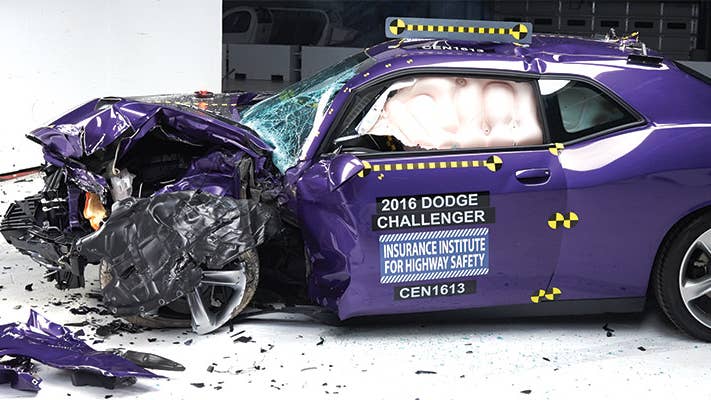Are Muscle Cars Actually Dangerous?
The IIHS spends a day crashing the new Ford Mustang, Chevy Camaro, and Dodge Challenger to find out.

We might malign the high door sills and ballooning curb weights, but cars are getting safer. Since 1994, road deaths per million miles have dropped by 60 percent. The number of fatalities per 100,000 vehicles has nearly been halved. Credit computer-designed crumple zones and advanced materials, or government-mandated airbags and stability control. Whatever. Generally speaking, you’ve got a better chance of surviving a car crash today than at any other time in history. But some cars still offer better chances than others. Are high-performance cars are more dangerous than ordinary sedans and crossovers?
Yes and no, according to the Insurance Institute for Highway Safety. In a special test, the nonprofit company spent an afternoon wrecking three modern Detroit muscle cars, the Chevy Camaro, Ford Mustang, and Dodge Challenger. Spoiler alert: None of them could manage top safety ratings.
The new Mustang earned “good” scores in roof strength, side impact, and head restraint, but struggled with the small overlap (read: front three-quarter) crash test. The Camaro, the most recent of the bunch, fared best here, but lost marks for its merely “acceptable” roof strength. And the eight-year old Challenger? Woof. That small overlap crash pushed the front wheel through the fender, an “extensive intrusion” that collapsed the driver footwell. Testers actually had to unbolt the seat in order to remove the crash test dummy. No bueno. Check out the video evidence below.

